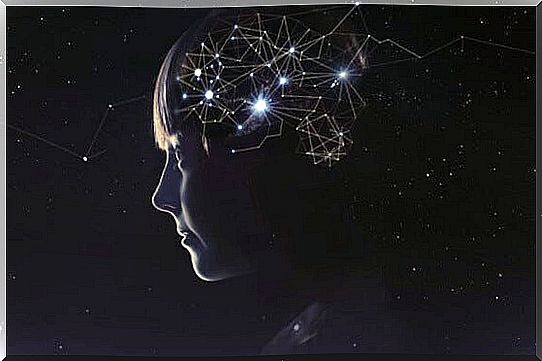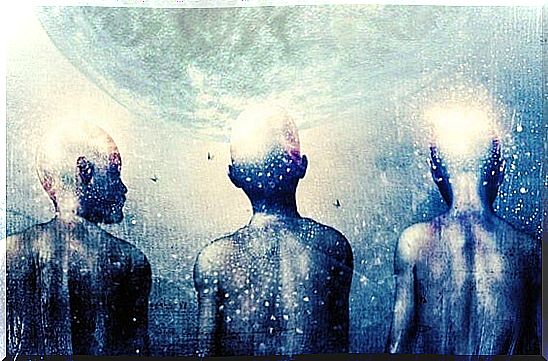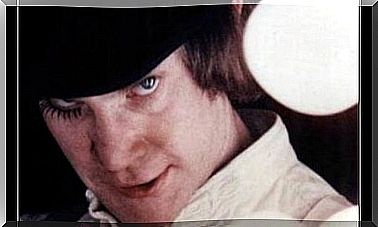What Is Consciousness? The Mystery Of Our Brain “almost ” Solved

What is consciousness? Scientists and philosophers have asked this same question for eons. Consciousness is above all that we experience : it is the placidity of that embrace of the person we love, it is the sweetness of that strawberry ice cream that we like so much, it is the pain of an emotional breakdown, it is the unfathomable curiosity we feel when looking at the stars, it is the fear of dying and it is happiness.
Consciousness is everything, because as Descartes said in his day, it is the essential property of the mind. Hence, everything that happens in it, be it thoughts, desires, wills or reflections, is what establishes its form and its particular foundations in each person. Now, all these processes define what the Australian philosopher David J. Chalmers calls simple explanations.
Everything we see and feel is captured by our conscious mind. It interprets it, processes it and is even capable of verbalizing it. However, later comes that complex explanation , the one on which not the entire scientific and philosophical community seems to agree yet. How do our senses, neurons and chemical processes manage to shape that very distinctive entity of each that we call consciousness?
William James, who, in addition to being a renowned psychologist, was also a philosopher, said at the time that consciousness would actually be made up of three differentiated “selves”. Those that the brain itself would be responsible for delimiting based on everything that we consciously experience. Thus, according to James, we would have a material self, a social self and a spiritual self.
As we can see, the challenges, proposals and theories aimed at explaining what consciousness is have never stopped appearing. However, it should be noted that neuroscience is making great strides in delineating exactly what it really is and even where it is located. Let’s see more data below.

Consciousness, what is it and what does science say?
To begin with, it should be noted that consciousness is not the same as consciousness. There are those who fall into mistakes and it is necessary to define each aspect: consciousness is the ability of most living beings to perceive reality and recognize themselves in it. Conscience is related exclusively to the moral aspect, with what is right and wrong based on a social code.
Once this is clarified, it is also interesting to talk about that idea that is so popular today: the need to be aware, to open our consciousness. This recurring message in the field of personal development and spirituality also has nuances. Our consciousness in reality is always receptive, it is impossible not to perceive for example that toothache, the freshness of the freshly cut grass or the approach of a storm.
Moreover, in 2012, a group of Cambridge scientists made a breakthrough in the study of consciousness by stating that this faculty is not only exclusive to the human being. Animals also have this attribute, and they specified it in what is known as The Cambridge Statement on Consciousness.
Likewise, renowned neuroscientists such as Dr. Philip Low, from Harvard University, also indicated that it is time to separate the spiritual aspect from the concept of consciousness. Neuroscience already offers us revealing and fascinating answers on this topic. Let’s get to know them.
Consciousness is the result of our brain complexity and our interactions
Fritjof Capra is a physicist at the University of Vienna who has written a book called The web of life. In this work he explains that the degree of self-awareness of an organism is based on its interactions with the environment in relation to a brain. In other words, every time we perceive something, that we feel, that we see, that we establish a relationship, a conclusion, we learn or experience something, our consciousness gradually builds up.
There comes a moment when all those millions of synapses and nerve impulses cross a threshold where the formation of that entity that we call consciousness and that defines human beings and animals takes place. Now, there are those who, knowing this, ask themselves the following question: could a computer or artificial intelligence become conscious if we made it experience things day after day? Well, Antonio Damasio, a well-known neuroscientist tells us that no, this will never be possible because machines simply don’t have emotions.
Likewise, we have another interesting study carried out by the physicist Roger Penrose and the anesthesiologist Stuart Hameroff where they point out certain aspects that are no less interesting. According to both experts, consciousness would be an inherent property of every biological system, of every living being. It is the result of certain quantum changes that take place in our neuronal circuits and in the microtubules, which little by little generate a certain structure formed by billions of moments of what is known as protoconsciousness.
Where is consciousness?
René Descartes affirmed that the seat of consciousness is in the pineal gland. Perhaps that small structure located in the center of our brain seemed like a good place to attribute its presence. Yet scientists tell us something very different. Harvard University has already published the first clues from a study in the journal Neurology.

Also, the son of one of the scientists who shaped and promoted this work wrote a very comprehensive article in Psychology Today detailing this interesting work. In this way, today we can say that that place where all the processes that make up our consciousness are concentrated are actually in three regions:
- The rostral dorsolateral pontine tegmentum of the brainstem.
- The left ventral anterior insula
- The pregenual anterior cingulate cortex.
To this day, this investigation is still underway under what is known as the Connectome Project. One of its purposes, for example, will be to bring back to consciousness patients in a vegetative state or in a coma. Getting them to return not only to our reality, but to do so with all their faculties, is an exceptional challenge that science has ahead of us and that we will undoubtedly be very aware of.









